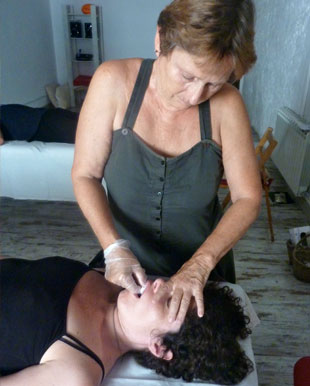
The respiratory movement
❉
The bones of the skull must be built to allow respiratory movement. With this first inspiration in 1901, Dr. W. Sutherland (1873-1954) began a life of research and investigation, developing what is now called craniosacral therapy. His path was not easy, since like any pioneer who brings new ideas, he had many problems even within the field of osteopathy.
He dedicated more than 30 years to studying the anatomy of the skull and experimented in different ways, applying pressure to specific bones of the skull and seeing the relationship they had with different dysfunctions and emotional changes. He developed a system of examination and treatment of the bones of the skull, achieving very good results, based on the idea that the bones are not solidly welded but that there is a micromovement or flexibility through the sutures where the bones are separated. In 1948, at the age of 75, Dr. Sutherland made a paradigm shift in the cranial concept.
Vital Breath
He has a second inspiration, and perhaps the most important one. He observed a problem that was released from within the client, not through his own strength or pressure, but through the person’s intrinsic power. Until now, he was prepared to look for movement, the axis of rotation, restriction, and imbalance in movement, and help it (the system) move better. Now he recognized that movement was precisely the result of deeper forces at play, and beneath the movement lay deeper states of well-being and calm.
The direction of his work changed radically: he stopped doing protocols and tests for the movement of bones and membranes and began to work and cooperate with the power of the system as a conductor of the body’s innate intelligence. He began to call the forces with which he was in contact “the Vital Breath,” a dynamic force that constantly creates the human being.
Later, an important line of osteopaths safeguarded and developed these ideas, creating Craniosacral Biodynamics. I would highlight Drs. Rollin Becker and Jim Jealous, Franklyn Sills, the German school of Bhadrena C. Tschumi… and of course the genius of pioneer W. Sutherland.
Author: Alberto Panizo
From the book Introduction to Craniosacral Therapy

